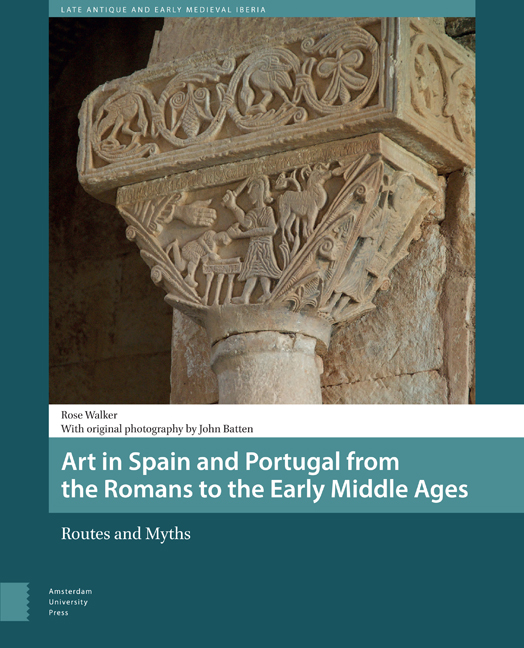Book contents
- Frontmatter
- Contents
- List of Illustrations
- Acknowledgements
- Conventions
- Abbreviations
- Introduction
- 1 The Lie of the Land: Art and Architecture Along the Roman Roads
- 2 Believing and Belonging: Late Antiquity and the Wider Mediterranean
- 3 The Visigothic Period: Fragmentation and Accretion
- 4 The Eighth and Ninth Centuries: Re-emergence and Invention
- 5 The Great Tenth Century
- 6 Dispersal After the Fall of the Caliphate
- 7 Trading Peace, Gold and Expertise, c. 1050-c. 1075
- 8 The Making of Romanesque: Reform and Synergy
- Epilogue
- Chronology 700-1100
- Bibliography of Cited Sources
- Index
- Frontmatter
- Contents
- List of Illustrations
- Acknowledgements
- Conventions
- Abbreviations
- Introduction
- 1 The Lie of the Land: Art and Architecture Along the Roman Roads
- 2 Believing and Belonging: Late Antiquity and the Wider Mediterranean
- 3 The Visigothic Period: Fragmentation and Accretion
- 4 The Eighth and Ninth Centuries: Re-emergence and Invention
- 5 The Great Tenth Century
- 6 Dispersal After the Fall of the Caliphate
- 7 Trading Peace, Gold and Expertise, c. 1050-c. 1075
- 8 The Making of Romanesque: Reform and Synergy
- Epilogue
- Chronology 700-1100
- Bibliography of Cited Sources
- Index
Summary
This book has brought together material from a wide chronological range and many different approaches to researching it, but there have been certain continuities, and some helpful cross-fertilisation. The reworking of classical art and the use of spolia have been recurring themes. The physical infrastructure laid down by the second century AD provided not only a substrate, but also much of the material used in later buildings. Reinforced by an awareness of Byzantium, classical visual vocabularies were claimed and constantly reinvented over these centuries. In the Visigothic period, occasional pockets of artistic activity, linked to trade across the Mediterranean, enlivened a widespread loss of expertise, but the classical past was more often perpetuated by grafting new identities onto pre-existing buildings or objects. Arriving in the eighth century, the Umayadds brought their own version of this legacy, already formulated in the East, but they also responded to the antique cities of Córdoba and Mérida. In the middle of the unsettled ninth century, Asturias and al-Andalus found themselves facing a common enemy, the Norsemen; this may have led to a moment of artistic collaboration and the construction of the belvedere at Monte Naranco. Around 900, short-lived military success in the Christian north encouraged chroniclers and painters to create fictive pasts, using words and images in a theatrical fashion. But the heights of artistic achievement and imaginative invention were reached only in the mid- to late tenth century when the caliphs of al-Andalus built Madīnat al-Zahrā and extended the Great Mosque of Cordoba. The aesthetics of both enterprises were echoed in the north with equally inventive, though not as well-resourced projects. Alongside complex architectural solutions and elaborate vaulting, intricate carving of marble and ivory defines this period, even if at the time metalwork and fabrics would have had more visual and economic impact. With the collapse of the Caliphate came dispersal of wealth, objects, and expertise, to North Africa, to the fragmented taifa kingdoms of al-Andalus, and to a limited extent to the north. Principally, the Catalan aristocrats and churchmen who had come to the aid of the caliph benefited; they were able to commission carved marble altars and gold frontals to adorn the sanctuaries of new cathedrals, abbeys, and collegiate churches, whilst their treasuries overflowed with new acquisitions. Such riches bought increased access to ecclesiastical networks north of the Pyrenees from Fleury, to Limoges and Cluny.
- Type
- Chapter
- Information
- Art in Spain and Portugal from the Romans to the Early Middle AgesRoutes and Myths, pp. 347 - 350Publisher: Amsterdam University PressPrint publication year: 2016



